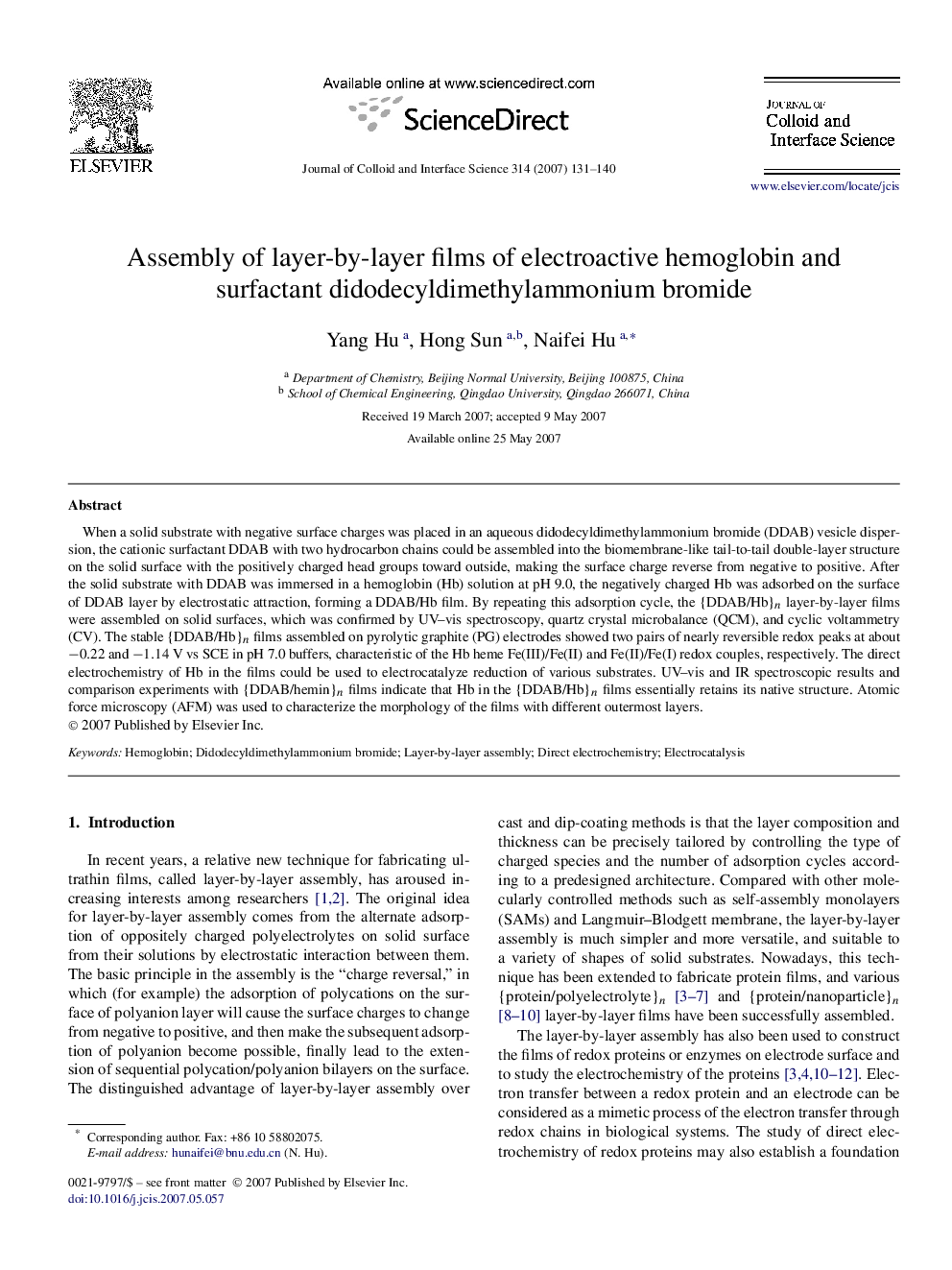| Article ID | Journal | Published Year | Pages | File Type |
|---|---|---|---|---|
| 612220 | Journal of Colloid and Interface Science | 2007 | 10 Pages |
When a solid substrate with negative surface charges was placed in an aqueous didodecyldimethylammonium bromide (DDAB) vesicle dispersion, the cationic surfactant DDAB with two hydrocarbon chains could be assembled into the biomembrane-like tail-to-tail double-layer structure on the solid surface with the positively charged head groups toward outside, making the surface charge reverse from negative to positive. After the solid substrate with DDAB was immersed in a hemoglobin (Hb) solution at pH 9.0, the negatively charged Hb was adsorbed on the surface of DDAB layer by electrostatic attraction, forming a DDAB/Hb film. By repeating this adsorption cycle, the {DDAB/Hb}n layer-by-layer films were assembled on solid surfaces, which was confirmed by UV–vis spectroscopy, quartz crystal microbalance (QCM), and cyclic voltammetry (CV). The stable {DDAB/Hb}n films assembled on pyrolytic graphite (PG) electrodes showed two pairs of nearly reversible redox peaks at about −0.22 and −1.14 V−1.14 V vs SCE in pH 7.0 buffers, characteristic of the Hb heme Fe(III)/Fe(II) and Fe(II)/Fe(I) redox couples, respectively. The direct electrochemistry of Hb in the films could be used to electrocatalyze reduction of various substrates. UV–vis and IR spectroscopic results and comparison experiments with {DDAB/hemin}n films indicate that Hb in the {DDAB/Hb}n films essentially retains its native structure. Atomic force microscopy (AFM) was used to characterize the morphology of the films with different outermost layers.
Graphical abstractFigure optionsDownload full-size imageDownload as PowerPoint slide
